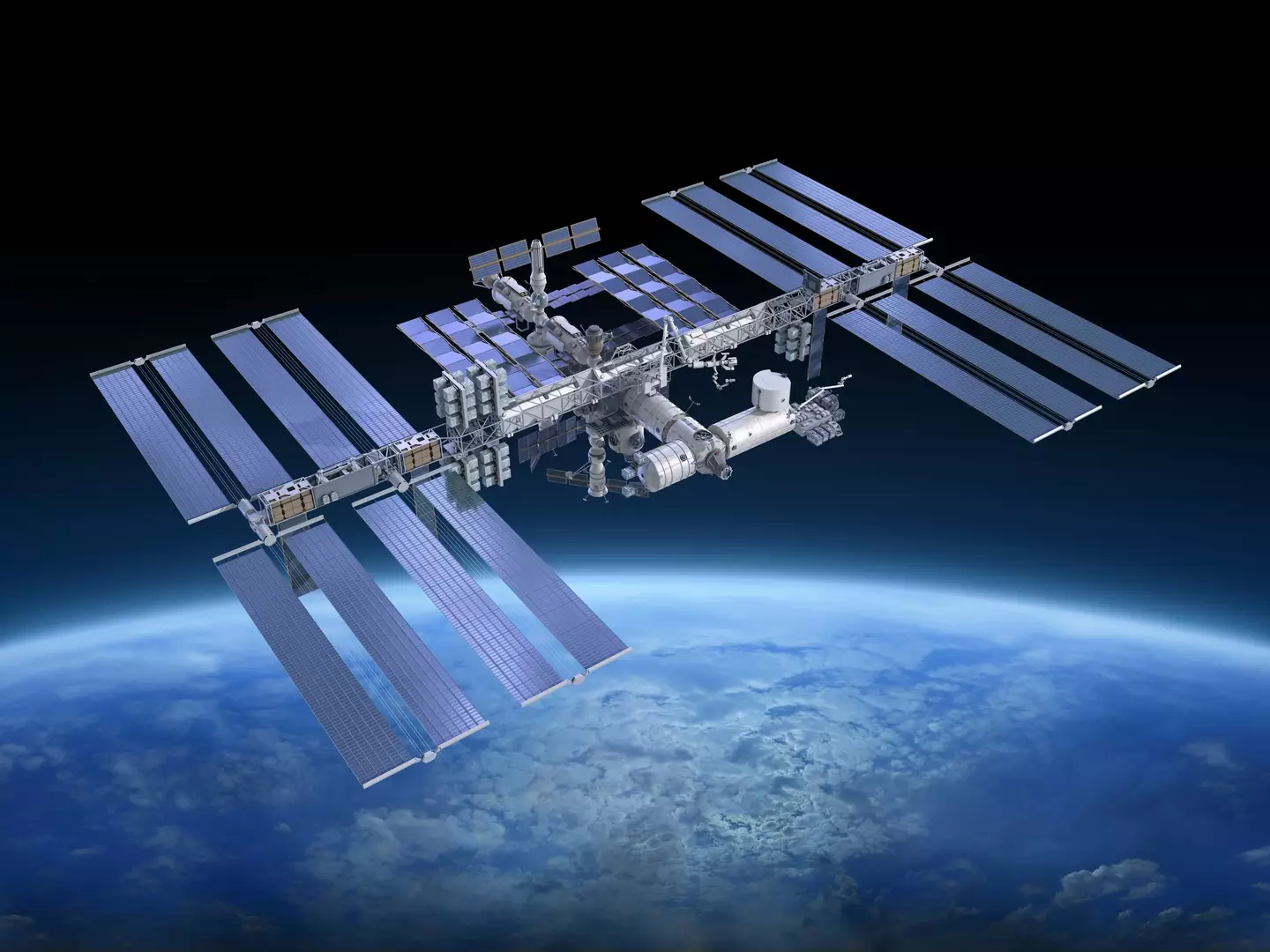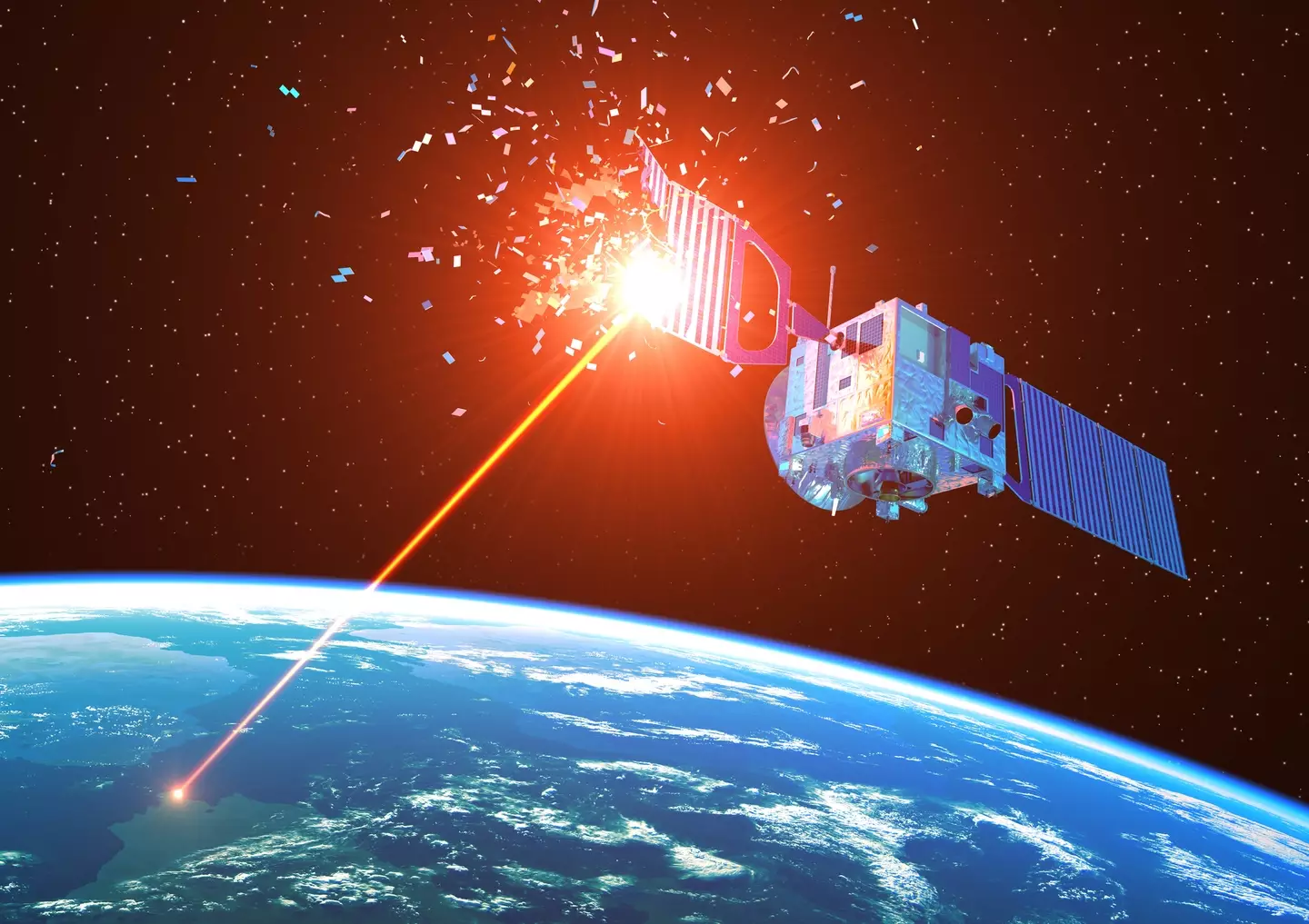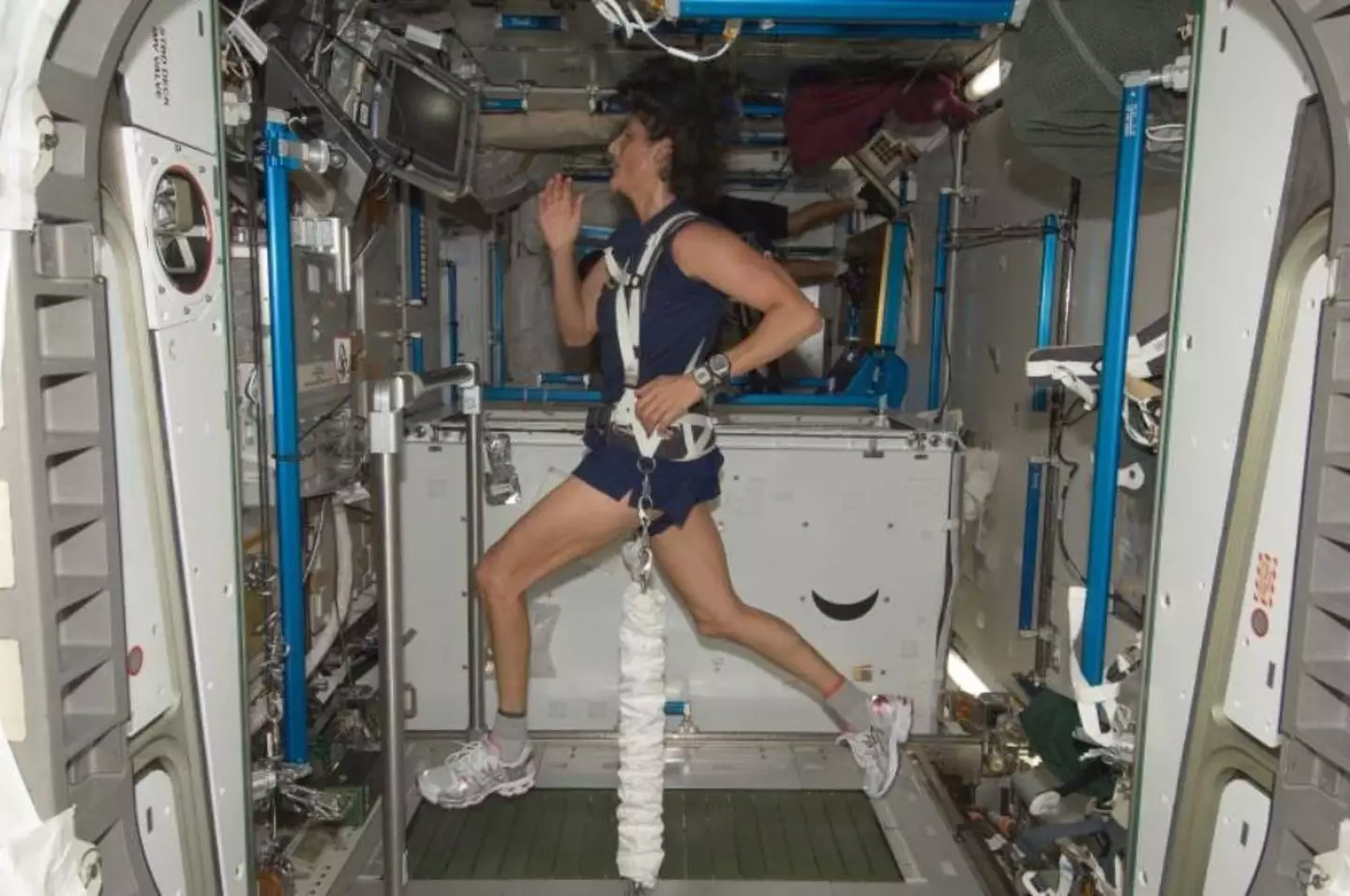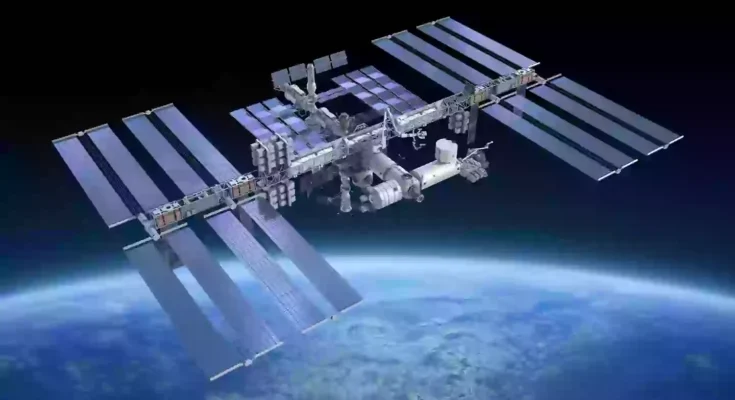By the year 2030, NASA plans to officially shut down the International Space Station.
After two decades of orbiting Earth, the ISS will be decommissioned, deorbited and destroyed – marking the end of an era in space exploration.
Although, Tesla billionaire Elon Musk want this done sooner as he believes the ISS has outlived its usefulness.
Taking to X, Musk wrote: “It is time to begin preparations for deorbiting the Space_Station It has served its purpose.”
He then responded to a comment on the post, adding: “My recommendation is as soon as possible. I recommend 2 years from now.”
Leaving the ISS floating in orbit isn’t an option. In June last year, the US space agency awarded SpaceX a $1 billion (£778 million) contract to help destroy the ISS safely.
But just how exactly will bringing down the largest object ever constructed in orbit go down?


scibak / Getty
“The ISS could break apart and create a lot of fragments and debris,” says Professor John Crassidis, an expert on space debris from University at Buffalo, New York.
“That debris could hit other debris and we end up with something called Kessler Syndrome.” This chain reaction could create more collisions, potentially wiping out our communication satellites and making future space missions nearly impossible.
Starting in 2026, the station will naturally sink from 400km (248 miles) to 320km (199 miles) due to Earth’s atmosphere.
About six months before re-entry, astronauts will abandon the station, leaving it unmanned for the first time in over 25 years. Once the ISS reaches 280km (174 miles), a SpaceX-designed tug (adapted from the Dragon capsule) will push it further down to 220km (137 miles). Here, the thicker atmosphere will take over and rob the outpost of its remaining orbital energy.
As the ISS plunges through the atmosphere, intense friction will tear it apart. “The solar panels will be the first to separate and break up,” noted Crassidis.
However, not every part of the ISS will be incinerated.


3DSculptor / Getty
Some of its heavier components, like the truss segments, may survive re-entry and land in the ocean. As such, mission controllers will need to ensure that the remaining debris is as far away from people as possible. They agreed on a remote part of the Pacific Ocean called Point Nemo.
This ‘spacecraft cemetery’ claimed its name since becoming the final resting place for hundreds of decommissioned spacecraft, including Russia’s Mir space station, which was brought down in 2001. The closest land to the site is Motu Nui, a tiny volcanic island near Easter Island, sitting over 2,700km (1,678 miles) away.
Within an hour, whatever remains of the ISS will sink to the seafloor, having crashed into the ocean at a few hundred miles per hour.
But dumping space hardware parts in the ocean doesn’t come without risk.
Some NASA experts argue that toxic and radioactive materials could survive re-entry and leak into the Pacific. Not only that but the act of dumping the ISS could violate United Nations environmental laws, which require nations to ‘protect and preserve the marine environment.’
But, unless a better solution comes about, NASA and SpaceX are moving forward with their current plan to bring the ISS down as safely as possible.


Elon Musk says it’s time to scrap the International Space Station (ISS) – sooner rather than later.
Built in 1998, the ISS has been home to NASA astronauts since 2000, serving as a testing ground for living and working in space.
It was a collaborative effort between NASA and its partners – the Canadian Space Agency, the European Space Agency, the Japan Aerospace Exploration Agency, and Russia’s Roscosmos – all working together to create the orbiting outpost.
And from there, it’s been a stepping stone for future missions to the Moon and Mars.
However, the Tesla CEO no longer sees a use in the outpost anymore as it’s already showing signs of its advanced age.
On X (formerly Twitter), Musk wrote: “It is time to begin preparations for deorbiting the Space_Station It has served its purpose. There is very little incremental utility.” He then added: “Let’s go to Mars.”
The close Trump advisor then replied to another comment on the same post, writing: “The decision is up to the President, but my recommendation is as soon as possible. I recommend 2 years from now.”
When a user responded with: “Time to build a base on Mars,” Musk simply replied: “Yes.”
NASA and its partners plan to bring the station down in 2030, using a controlled deorbit vehicle provided by SpaceX.
However, Musk thinks the sooner, the better.
All of the ISS partners are agreed on the 2030 deorbit plan, except for Russia. The country has expressed staying committed until 2028 – just a year after Musk’s proposed 2026 shutdown.
With President Trump backing him, the SpaceX founder’s suggestions aren’t that disregardable.


SCIEPRO / Getty
At the moment, the world’s richest man is leading a federal audit under the Department of Government Efficiency (DOGE), which has already resulted in thousands of layoffs across multiple agencies.
Plus, Musk has had his eye on the Red Planet for a long time now. So, this step is just another one forward towards his goal of space colonisation.
While the US space agency is working to get astronauts to the moon via its Artemis program, as a stepping stone before getting to Mars, Musk wants to skip this step entirely.
In a December X post, he classed the moon as a ‘distraction’ adding that ‘we’re going straight to Mars.’
NASA commented on the recent announcement in an email: “NASA’s current mission plans call for using the International Space Station, and future commercial space stations, in low Earth orbit to conduct groundbreaking science, as well as a training ground for crewed missions to the moon and Mars.
“We’re looking forward to hearing more about the Trump Administration’s plans for our agency and expanding exploration for the benefit of all.”


The case of stranded NASA astronauts Sunita “Suni” Williams and Barry “Butch” Wilmore has gripped the nation.
Even President Donald Trump calling on Elon Musk to try and get them back sooner than expected with his SpaceX rockets, their eventual return is set to be quite the event.
NASA has already explained why it’s not as simple as Musk flying up there to rescue Williams and Wilmore from the International Space Station, although they’re supposed to be back on Earth sooner than expected thanks to their return being moved up.
After flying to the ISS as part of 2024’s first crewed mission of the Boeing Starliner, Williams and Wilmore were given an extended stay due to issues with their craft. It was flown back unmanned, leaving them trapped there until SpaceX’s Crew 9 mission can pick them up with its spare seats.
Williams previously said she was losing basic human functions, but to combat that, she and Wilmore have to undergo a ‘brutal’ daily regime to ensure they’re fighting fit when back on Terra Firma.


Suni Williams took part in a similar routine when on the ISS in 2012 (NASA)
Explaining some of the unexpected side effects to students at Needham High School in Massachusetts (via Mail Online), the 59-year-old astronaut admitted: “I’ve been up here long enough, right now I’ve been trying to remember what it’s like to walk. I haven’t walked. I haven’t sat down. I haven’t laid down.”
Speaking during a January 31 press conference, she expanded on the daily routine that is supposed to avoid excess bone density loss. NASA has revealed that astronauts will typically lose 1% to 2% of bone density in the hip and spine for every month they’re in space. The site writes that this is “compared to bone loss of 0.5% to 1% per year in post-menopausal women and much older men on Earth.”
With a loss of bone density, Williams and Willmore’s bones would be more fragile and susceptible to an increased risk of breaks alongside ‘early-onset osteoporosis’.
Williams’ daily routine involves her taking part in up to two hours of exercise a day.
Seeing the positives, she added: “Your joints don’t hurt, which is quite nice.”
While hitting the intergalactic gym, Williams and other astronauts complete variations of treadmill running, stationary biking, and resistance strength training.
Although there were already concerns about Williams’ appearance, NASA has reiterated they’re given regular medicals to ensure they’re doing well while aboard the ISS.
In a statement to Mail Online, NASA promised: “Suni Williams is successfully performing all duties and functions during her mission aboard the International Space Station, including her daily exercise routine, spacewalks outside of the space station, and a variety of science experiments inside the orbiting laboratory.”
While Williams has said she can’t wait to get home and eat a pizza, at least she’s finding the brighter side of being stuck in space.
On January 30, she posted the ultimate selfie as she serviced the ISS during a spacewalk. Not everyone can say they’ve snapped a selfie while flying 423 km above the Pacific Ocean


The saga of Sunita “Suni” Williams and Barry “Butch” Wilmore is finally set to come to an end, as NASA confirms when the stranded astronauts will be brought back to Earth. Williams and Wilmore flew on the Boeing Crew Flight Test (CFT) mission, and although it was supposed to take eight days, they’ve been marooned on the International Space Station since June 6, 2024.
The pair have become the subject of much media interest, with President Donald Trump even calling for Elon Musk to try and rescue them. But alas, it’s not that easy, with NASA explaining why Williams and Wilmore have to wait a little longer.
There have been concerns for the astronauts, and the longer they stay up there, the worse the side effects of an extended stay in space become.
Due to a fault with their Boeing Starliner thrusters as it approached the ISS, the Crew-9 team of Williams and Wilmore were left up there while their craft was eventually flown back unmanned.
In its latest blog post, NASA confirmed what’s going on with the Crew-10 launch that will bring the Crew-9 astronauts home. It is now accelerating its Crew-10 launch and is hoping to hit a March 12 launch window.
There will be a couple of days of handover before Crew-9 is sent home.
Crew-10 will be the tenth operational NASA Commercial Crew Program flight and is planned to be the 17th crewed orbital flight of a Crew Dragon spacecraft. It’s comprised of NASA astronauts Anne McClain and Nichole Ayers, JAXA astronaut Takuya Onishi, and Roscosmos cosmonaut Kirill Peskov.
Instead of flying a new Dragon ship, NASA is aiming for an earlier window because it will use the previous Endurance craft.
NASA says: “Joint teams are working to complete assessments of the spacecraft’s previously flown hardware to ensure it meets the agency’s Commercial Crew Program safety and certification requirements.


Sunita Williams says she doesn’t feel ‘stranded’ in space (CBS Evening News)
“Teams will work to complete Dragon’s refurbishment and ready the spacecraft for flight.”
Explaining why things are suddenly moving so quickly, NASA Commercial Crew Program manager Steve Stich said: “Human spaceflight is full of unexpected challenges. Our operational flexibility is enabled by the tremendous partnership between NASA and SpaceX and the agility SpaceX continues to demonstrate to safely meet the agency’s emerging needs.
“We greatly benefit from SpaceX’s commercial efforts and their proactive approach in having another spacecraft ready for us to assess and use in support of Crew-10.”
Although the return of Williams and Wilmore has only been moved forward a matter of days and is “pending mission readiness”, we’re sure it’s a welcome relief for the pair.
Despite all of this, Williams has said she doesn’t feel ‘stranded’, telling CBS: “I don’t think I’m abandoned. I don’t think we’re stuck up here.
“We’ve got food. We’ve got clothes. We have a ride home in case anything really bad does happen to the International Space Station.
“We’re in a posture … where we have the International Space Station fully manned and doing what the taxpayers wanted, to do world-class science. And so I feel honored, like I said, to be here and a part of the team.”


Elon Musk might be heading to Fort Knox to check on $428 billion worth of gold in the US.
The head of the Department of Government Efficiency (DOGE) has been invited to Fort Knox to take a look at the largest gold reserves in the US after he discovered there’s no yearly review for it.
The suggestion was floated when a libertarian-leaning news aggregator with two million followers called Zero Hedge posted on X.
“It would be great if Elon Musk could take a look inside Fort Knox just to make sure the 4,580 tons of US gold is there,” Zero Hedge wrote. “Last time anyone looked was 50 years ago in 1974.”
The tech billionaire then responded to the post: “Surely it’s reviewed at least every year?”
But Republican Senator Paul of Kentucky replied: “Nope. Let’s do it.”


Bloomberg / Contributor / Getty
Now, some are questioning whether the SpaceX founder will add the U.S. gold reserves to his list of concerns and take a trip to the Fort Knox military base.
Since President Donald Trump returned to the White House and put Musk in a position of power in Washington, the South African has targeted areas for budget cuts that will save the federal government from ‘wasteful spending.’
Senator Paul, who has reportedly spent the last decade trying to verify himself to the military base ‘to make sure it’s all there’ has spoken about the need for greater transparency. He originally received permission to visit during the first Trump administration, but the trip did not go ahead.
“I think some of them may not think it needs to be audited all the time, but I think the more sunlight, the better, more transparency, the better,” Paul explained.
The Bullion Depository holds around 147 million troy ounces of gold, representing over half (56%) of the US federal gold reserves.
.jpg)
.jpg)
Andrew Harnik / Staff / Getty
Guarded by the US Mint Police, the total US reserve sits at more than 8,100 tonnes, making it the largest in the world, according to the World Gold Council.
As of current, the stash of 147 million gold ounces is equivalent to just around $430 billion (£341 billion) – which is a little over Elon Musk’s net worth in case you were wondering.
Despite not backing the dollar directly anymore, the reserves act as a financial safety net against inflation as well as maintain public confidence in the economy.




